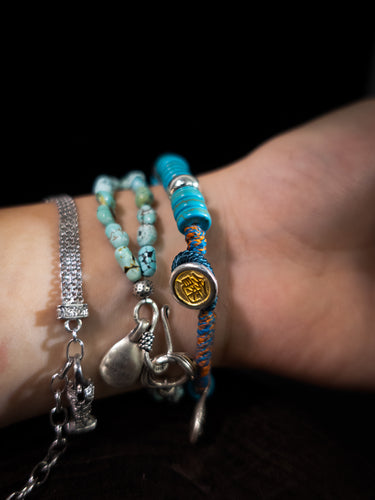
In the realm of classical oriental art, one particular masterpiece stands out for its exquisite beauty and timeless allure - the Cloisonné Copper Square. Within its intricate design lies not just a jar but a vessel of historical grandeur—a testament to the enduring legacy of Ming Dynasty craftsmanship.This remarkable artwork showcases the mastery of ancient artisans and captivates art enthusiasts and collectors worldwide. With its intricate design, vibrant colors, and rich cultural significance, the Cloisonné Copper Square is a testament to the artistic excellence of the oriental world.
The Origins of Cloisonné Art
Cloisonné art has a rich and fascinating history that spans centuries and continents. Its origins can be traced back to the ancient Eastern Mediterranean region, where the technique first emerged. The term "cloisonné" is derived from the French word "cloison," which means "partition" or "compartment." This aptly describes the defining feature of this art form - the use of thin metal strips to create compartments or cells that are then filled with colorful enamel. Cloisonné art found its way to China during the Yuan Dynasty (1271-1368) through trade routes such as the Silk Road. However, it was during the Ming Dynasty (1368-1644) that the art form truly flourished and reached its pinnacle of excellence. The Ming Dynasty is renowned for its patronage of the arts, and the imperial court played a significant role in promoting and fostering the development of cloisonné craftsmanship. Chinese artisans embraced the technique and elevated it to new heights, infusing it with their own cultural influences and artistic sensibilities. They developed their own unique style, characterized by intricate patterns, vivid colors, and an emphasis on symbolism and storytelling. Cloisonné objects from this period often featured mythical creatures, auspicious symbols, and scenes from nature, reflecting the deep-rooted beliefs and values of Chinese society. The Ming Dynasty's mastery of cloisonné art garnered international acclaim, and it became highly sought after by collectors and connoisseurs around the world. The exquisite craftsmanship and vibrant beauty of Ming Dynasty cloisonné pieces made them prized possessions and valuable diplomatic gifts. Over time, the art of cloisonné spread to other parts of Asia, including Japan and Korea, where it developed its own distinctive styles and techniques. Each region added its own cultural nuances, resulting in a diverse range of cloisonné art forms across Asia. The techniques and skills required to create cloisonné art were traditionally passed down through generations within artisan families. The process demanded meticulous attention to detail, patience, and a deep understanding of materials and firing techniques. Skilled artisans spent years honing their craft, perfecting their techniques, and mastering the art of enamel application.
The Process of Creating Cloisonné Copper Square
Crafting a Cloisonné Copper Square is a labor-intensive and highly skilled process that requires precision and patience. The first step involves shaping a copper base into a square form. The surface is then meticulously cleaned and prepared for the intricate cloisonné work. Thin strips of metal, usually copper or silver, are carefully bent and affixed to the surface of the square, creating compartments that separate different sections of the design. These metal strips, known as cloisons, are precisely placed to achieve the desired pattern. The next step involves filling the cloisons with colored enamel. The enamel, a mixture of finely ground glass, metal oxides, and pigments, adds vibrant colors to the artwork. Skilled artisans meticulously apply and layer the enamel, ensuring a seamless and smooth finish. Once the enamel is applied, the Cloisonné Copper Square undergoes a series of firings in a kiln. The high temperatures in the kiln allow the enamel to fuse and achieve its characteristic luster. Each firing is a delicate process, as the timing and temperature must be carefully controlled to prevent any damage to the artwork. The final step involves polishing the square to reveal its stunning beauty. The artisans meticulously smooth the surface, enhancing the brilliance of the colors and bringing out the intricate details of the design. The result is a breathtaking piece of art that showcases the harmonious blend of vibrant colors and meticulous craftsmanship.
The Symbolism and Significance of Cloisonné Copper Square
The Cloisonné Copper Square holds deep cultural and symbolic significance. In the oriental world, squares represent stability, balance, and harmony. The intricate patterns and vibrant colors of the Cloisonné Copper Square reflect the rich cultural heritage and artistic traditions of the oriental world. Each design element in the Cloisonné Copper Square carries its own symbolic meaning. Traditional motifs such as dragons, phoenixes, and floral patterns are often featured, representing power, prosperity, and beauty. These symbols, meticulously crafted in vibrant enamel, create a visual narrative of oriental culture and mythology. Owning a Cloisonné Copper Square is not just possessing a beautiful artwork but also embracing a piece of history and culture. It is a testament to the artistic achievements of ancient artisans and a connection to the rich heritage of the oriental world.
In conclusion, the Cloisonné Copper Square is a masterpiece that exemplifies the magnificence of classical oriental art. Its intricate design, vibrant colors, and rich cultural significance make it a highly sought-after piece for collectors and enthusiasts alike. Crafted with meticulous precision and imbued with deep symbolism, the Cloisonné Copper Square stands as a timeless testament to the artistic excellence of the oriental world. To possess such a square is to hold in our hands a tangible link to the elegance of a bygone era. It is an invitation to experience not just the aesthetic beauty but the profound cultural significance woven into its very essence. In the presence of Cloisonné Copper Square, art becomes a doorway to cultural heritage, inviting us to appreciate the enduring legacy of this captivating art form.





























